Authors:
ABSTRACT
Aim
To investigate the acidogenic response of plaque with various European chocolates of varying cocoa contents.
Methods
14 subjects participated in the study. On each test day plaque pH measurements were taken at baseline and at 2, 5, 10, 15,
20 and 30 minutes after challenge with the test chocolates or control foods. A plaque sample was removed from the buccal surfaces of
posterior teeth representing all quadrants, within 30 seconds. The plaque pH was measured on an ISFET electrode connected to a
Sentron 2001 pH system. The test chocolates were: Diet chocolate (DC), Plain European chocolate (PEC 70 cocoa), Plain
English chocolate (PenC 34 cocoa), Milk English chocolate (MenC 20 cocoa), Milk European chocolate (MEC
30 cocoa), White chocolate (WC no cocoa), Milk chocolate with hazelnuts (MHC 20 cocoa). 15 g of each chocolate was
consumed by the volunteers and 10 ml of 10 sucrose and sorbitol solutions were included as controls.
Results
The data
were analysed for: minimum pH, area below baseline, area below "critical pH", time spent below "critical pH" and Acidogenic Potential
Index (API). DC was found to be significantly different to sucrose and all the other test chocolates, and similar to sorbitol for all the
parameters studied. The area below baseline plaque pH was also significantly smaller for PEC (p<0.006) and MHC (p<0.028) as
compared with sucrose. The mean area below the "critical pH" (5.7) for PEC and MHC was lower at 0.200.34 and
0.601.40 respectively, compared with sucrose at 1.381.03, but not statistically significant. The API of DC, PEC,
PEnC, MEnC, MEC, WC and MHC was 0.03, 0.41, 0.66, 0.93, 0.94, 0.88 and 0.45 respectively compared with an API of 1.00 of
sucrose.
Conclusion
Diet chocolate was found to have no acidogenic effect on dental plaque. Also, the PEC and MHC had a lower
acidogenic potential compared with sucrose.
PLUMX METRICS
Publication date:
Keywords:
Issue:
Vol.4 – n.4/2003
Page:
Publisher:
Cite:
Harvard: E. Verakaki, M. S. Duggal (2003) "A comparison of different kinds of European chocolates on human plaque pH", European Journal of Paediatric Dentistry, 4(4), pp203-210. doi:
Copyright (c) 2021 Ariesdue

This work is licensed under a Creative Commons Attribution-NonCommercial 4.0 International License.
